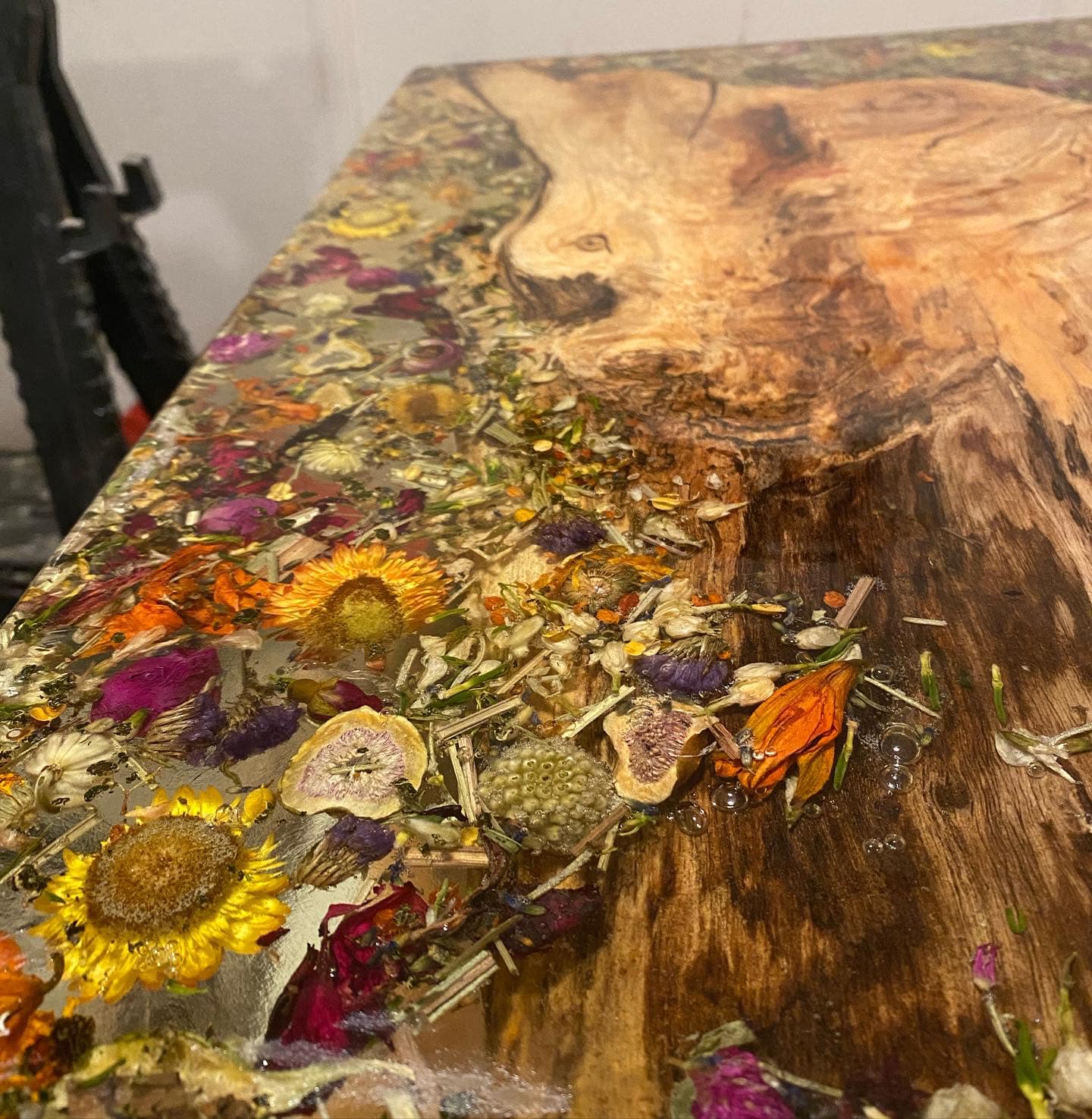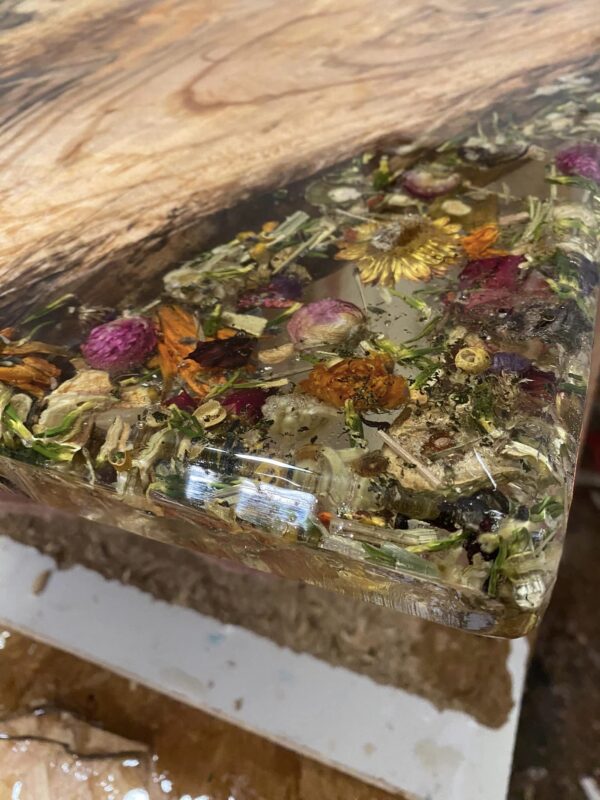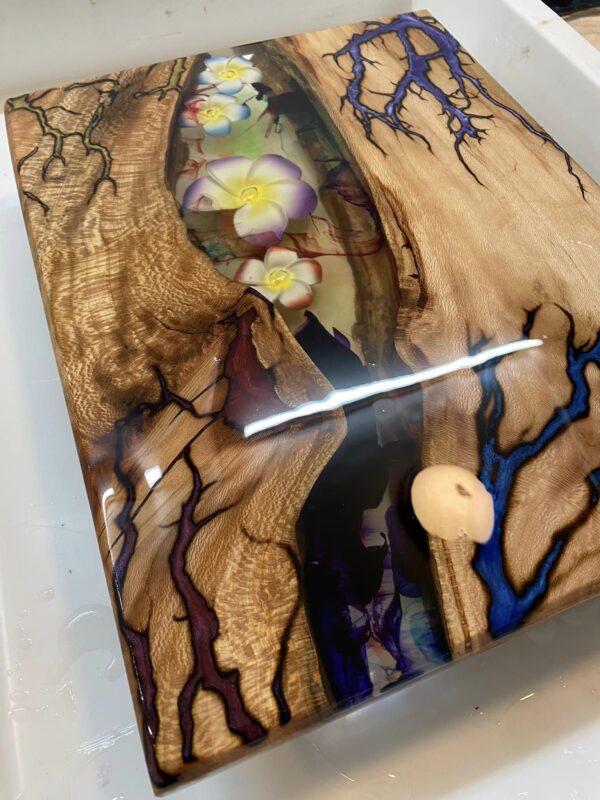Dried flowers are a popular decorative element in many crafting projects, including resin art. They add a touch of natural beauty and elegance to your creations, and their intricate shapes and vibrant colors can create stunning visual effects. However, preserving the color of dried flowers can be a challenge, especially when using them in epoxy resin projects. In this article, we will discuss the different methods for drying flowers and provide tips on how to keep their color intact when using them in epoxy projects.
Why Use Dried Flowers in Epoxy Projects?
Epoxy resin is a versatile material that can be used to create a variety of crafts, from jewelry to home decor items. It is a popular choice among crafters because it is easy to work with, durable, and creates a glossy, glass-like finish. Epoxy resin also has the unique ability to encapsulate objects within it, which makes it an ideal medium for preserving and displaying dried flowers.
Dried flowers, on the other hand, are popular for their natural beauty, unique shapes, and vibrant colors. They are often used in crafting projects, such as scrapbooking, card-making, and home decor, to add a touch of elegance and a natural feel. Dried flowers can be found in a variety of colors and shapes, making them a versatile element in crafting projects
.
When used together, epoxy resin and dried flowers can create stunning and unique works of art. The resin protects the flowers from damage and preserves their colors, while the flowers add a natural and organic feel to the finished product.
Methods for Drying Flowers
Before we discuss how to keep the color of dried flowers intact when using them in epoxy projects, it is important to understand the different methods for drying flowers. There are several ways to dry flowers, each with its own pros and cons. Some of the most common methods include air-drying, pressing, and using desiccants.
Air-drying
Air-drying is the most traditional and straightforward method of drying flowers. It involves hanging the flowers upside down in a dry, dark, and well-ventilated area for several weeks until they are completely dry. This method is best suited for sturdy flowers with thick petals, such as roses and zinnias, as they are less likely to wilt or become damaged during the drying process.
To air-dry flowers, start by selecting fresh blooms in their prime, without any signs of damage or disease. Remove any leaves from the stem and tie them together in small bunches, using string or rubber bands. Hang the bunches upside down from a hook or hanger in a dry, dark, and well-ventilated area, such as a closet or garage. It is important to avoid areas with high humidity, direct sunlight, or heat sources, as these can cause the flowers to wilt or discolor.
Air-drying can take several weeks, depending on the type of flower and the humidity levels in the environment. Once the flowers are completely dry, they can be used in epoxy projects or stored in a dry, dark place for future use.
Pressing
Pressing is another common method of drying flowers, which involves flattening them between sheets of absorbent paper, such as blotting paper or newspaper. This method is best suited for delicate flowers with thin petals, such as pansies and violets, as they are less likely to wilt or become damaged during the drying process.
To press flowers, start by selecting fresh blooms in their prime, without any signs of damage or disease. Remove any leaves from the stem and place the flowers between two sheets of absorbent paper. Place the paper and flowers inside a heavy book or flower press, and leave them for several weeks until they are completely dry.
Pressing can take several weeks, depending on the type of flower and the thickness of the petals
Once the flowers are completely dry, they can be used in epoxy projects or stored in a dry, dark place for future use.

Using Desiccants
Using desiccants is a method of drying flowers that involves burying them in a material that absorbs moisture, such as silica gel or kitty litter. This method is best suited for fragile flowers with thin petals, as it allows them to dry quickly without becoming damaged.
To use desiccants, start by selecting fresh blooms in their prime, without any signs of damage or disease. Remove any leaves from the stem and place the flowers inside a container filled with the desiccant material. Make sure the flowers are completely covered and leave them for several days until they are completely dry.
Desiccants can dry flowers much faster than air-drying or pressing, but they can be more expensive and may require special handling. It is important to follow the manufacturer’s instructions carefully and avoid inhaling or ingesting the desiccant material.
Tips for Preserving the Color of Dried Flowers in Epoxy Projects
Once you have dried your flowers, it is important to take steps to preserve their color when using them in epoxy projects. Here are some tips to help you achieve the best results:
- Use a UV-resistant epoxy resin
UV rays can cause the colors of dried flowers to fade over time, so it is important to use a UV-resistant epoxy resin. This type of resin contains additives that protect against UV damage and help preserve the colors of the flowers.
- Avoid exposing the epoxy to direct sunlight
Even with a UV-resistant resin, it is best to avoid exposing the epoxy to direct sunlight for extended periods of time. This can cause the resin to yellow and may also contribute to color fading.
- Use a clear resin
Using a clear epoxy resin will allow the colors of the flowers to show through without any tinting or discoloration. If you prefer a colored resin, choose a transparent or translucent tint that will not obscure the flowers.
- Seal the flowers before adding them to the epoxy
Sealing the flowers with a clear spray sealant before adding them to the epoxy can help protect their colors and prevent them from fading. This is especially important for flowers that are prone to discoloration, such as hydrangeas.
- Arrange the flowers carefully
When arranging the flowers in the epoxy, take care to position them in a way that showcases their colors and shapes. Consider using a toothpick or tweezers to manipulate the flowers into the desired position.
- Use a thin layer of epoxy
Using a thin layer of epoxy will help prevent the colors of the flowers from becoming distorted or muted. Apply the epoxy in multiple thin layers, allowing each layer to dry completely before adding the next.
- Follow the manufacturer’s instructions
Finally, it is important to follow the manufacturer’s instructions carefully when working with epoxy resin. Mixing the resin and hardener in the correct proportions and applying it according to the recommended thickness will help ensure the best results.
Conclusion
Dried flowers are a beautiful and versatile element in crafting projects, especially when used in conjunction with epoxy resin. By understanding the different methods for drying flowers and following the tips for preserving their colors, you can create stunning and unique works of art that showcase the natural beauty of these delicate blooms. Whether you are a seasoned crafter or a beginner, experimenting with dried flowers and epoxy resin can open up a world of creative possibilities.

